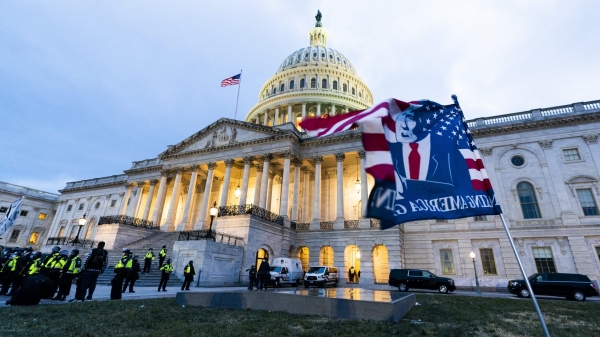By Brandon Moseley
Alabama Political Reporter
The U.S. Fish and Wildlife Service (USFWS) has issued a press release to announce that the nine whooping cranes that wintered in the Wheeler National Wildlife Refuge (NWR) in Decatur, Alabama left to go on their Spring Migration on April 12th. The nine cranes are flying unassisted this time and were last reported in Wayne County, Illinois. The nine Alabama cranes are expected to spend the summer in Wisconsin.
The nine were part of the “Class of 2011” Whooping Cranes that were following a person in a whooping crane costume flying an ultra-light from Wisconsin to Florida. Unfortunately their journey was interrupted in Alabama because of new FAA regulations preventing an ultra-light to be used for commercial purposes. By the time all the conflicting federal agencies figured out how to properly file the paperwork to allow the cranes to continue their journey the nine young cranes decided they would rather spend the winter in Alabama…….thus restoring the whooping cranes in Alabama. A tenth whooping crane who started the ultra-light flight migration with the nine; but left has already returned to Wisconsin.
The Whooping Crane Eastern Partnership (WCEP) is an international coalition of public and private groups that is reintroducing the whooping cranes to eastern North America.
Cathy Stepp is the Director of The Wisconsin Department of Natural Resources (DNR). She says that the agency “is excited about the news of the return of last year’s chicks back to Wisconsin. We will continue to follow their progress closely and hope that the birds eventually return to their release grounds in east-central Wisconsin.” “As part of these efforts, the Wisconsin DNR is also looking forward to the second year of releases at White River Marsh State Wildlife Area and Horicon NWR.”
Another eight juvenile Whooping cranes were released directly with adult Whooping cranes in Wisconsin in the fall for the fall migration. This is the WCEP’s Direct Autumn Release (DAR) program Four of the DAR 2011 cranes have already returned to Wisconsin.
According to the written statement: “The Whooping cranes that take part in the ultralight and DAR reintroductions are hatched at the U.S. Geological Survey’s Patuxent Wildlife Research Center in Laurel, Md., and at the International Crane Foundation in Baraboo, Wis. Chicks are raised under a strict protocol that avoids conditioning the young birds to people and seeks to ensure the birds remain wild.”
In the 1940s the Whooping cranes almost went extinct. Today there are over 600 of them and of these 445 live in the wild. Of the wild Whooping cranes, 20 non-migrating Whooping cranes live in Kissimmee Florida year round; 17 non-migrating Whooping cranes live in Louisiana year round; 302 migrating whooping cranes nests spend their summers at Wood Buffalo National Park in northern Alberta, Canada and their winters at Aransas NWR on the Texas Gulf Coast. The nine juvenile Alabama Whooping cranes are among 106 migrating Whooping cranes who live in the eastern United States.
The WCEP asks that if you encounter a whooping crane in the wild do not get within 200 yards of the birds on foot and do not bring a vehicle within 100 yards of the Whooping cranes. Please stay concealed from the birds and do not speak loudly and disturb the birds. Disturbing, harassing, or killing a Whooping crane is a federal crime.
To learn more about the Whooping cranes:


















































